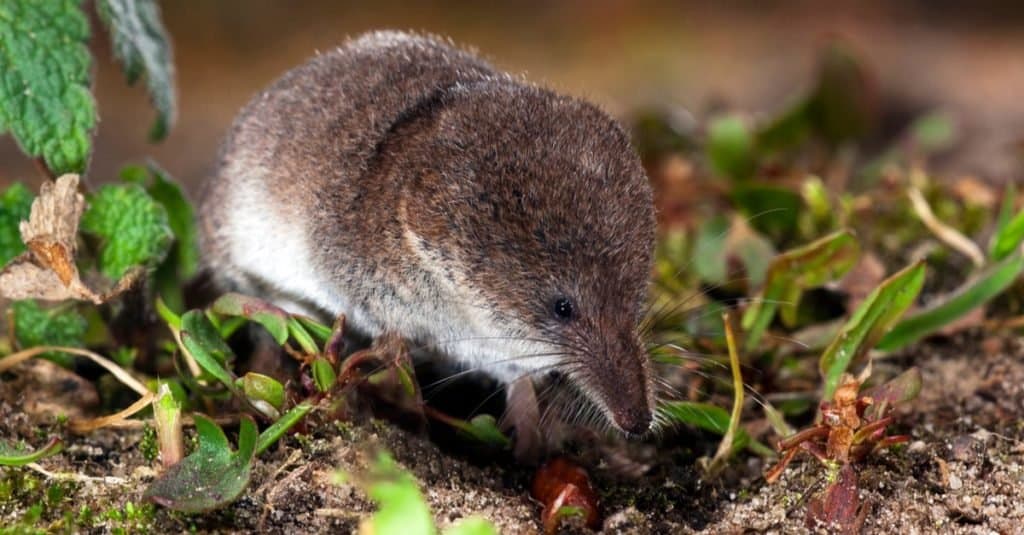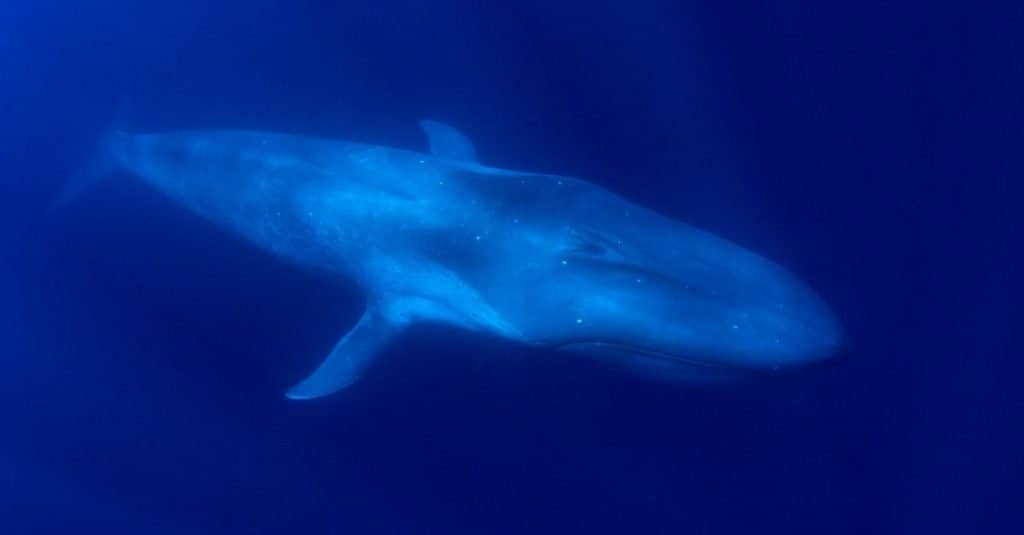Key Points:
- This list is made by comparing the amount of food that a wild animal naturally eats compared to its body size, which reveals why it could be considered overweight. However, some animals like domestic dogs and cats suffer from obesity due to the foods their owners feed them and lack of exercise.
- The Polyphemus moth, which lives in the United States and Canada, eats 86,000 times its body weight in the 56 days that it lives as a moth. To eat the same amount, humans would have to eat about 125 pounds of lettuce every day.
- Daily, the blue whale, the largest animal in the world, consumes 4 tons of krill. For feeding, it takes big gulps of water, then strains the water out using its unique baleen plates as a strainer.
What are the five animals in the world that could go on a diet? If you have ever struggled to stay on a diet to reach a healthy weight, you are not alone. Across the globe are animals that struggle to stay on a diet. In fact, you could even call them gluttons. While the average American consumes 1,996 pounds of food per year or 5 pounds of food per day, the average male weighs 197 pounds, and the average female weighs 171 pounds. Many animals consume more than their body weight daily.
Additionally, the average American spends about 68 minutes on weekdays and 77 minutes on weekends and holidays eating. There are many animals, however, that spend over 20 hours a day eating, and some want a meal every 15 minutes.
Let’s take a look at some of these marvelous animals that are part of the animal kingdom.
This list was compiled by comparing the amount of food that the animal eats to its body size. Then, it is easy to see why some of these animals may be considered overweight. Consider these five animals that are gluttons in the animal kingdom.
#5 Fat Animal: Polyphemus Moth

A
polyphemus moth (Antheraea polyphemus) rests on a fern in a garden. It is a member of the Saturniidae family, which is known to be the greatest silk moths. It draws its name from Greek mythical stories.©LightShaper/Shutterstock.com
According to the Guinness Book of World Records, the Polyphemus moth eats 86,000 times its body weight in the 56 days that it lives as a moth. To eat the same amount, we would have to eat about 125 pounds of lettuce every day.
As caterpillars, the Polyphemus moth is bright green with a rust-colored head. This caterpillar lives for about six weeks before metamorphizing into a moth. It can be seen in most areas of the United States and throughout much of Canada.
Learn more about moths.
#4 Fat Animal: Bee Hummingbird

©Wang LiQiang/Shutterstock.com
If you were to look at the bee hummingbird, you would wonder how anyone could include it on the list of the most overweight animals. These hummingbirds that weigh about 2.5 grams eat half their body weight in sugar daily. Furthermore, it can store up to 17% of its body weight as fat. That is the equivalent of the average size person storing 30 pounds of fat daily. This hummingbird wants a meal of nectar every 15 minutes.
The bee hummingbird is the smallest bird on earth. It lives in Cuba, where it prefers to dine on horizontally positioned wildflowers.
Learn more about hummingbirds.
#3 Fat Animal: Pygmy Shrew

©Agami Photo Agency/Shutterstock.com
The pygmy shrew eats 125% of its body weight daily. Ideally, this shrew living in Great Britain and Ireland dines on high-protein invertebrates, like insects, arachnids, and woodlice meals every 180 minutes or less. They will often use burrows dug by other animals to get to prime feeding grounds.
Why are their appetites so enormous? Pygmy shrews also have one of the fastest metabolisms in the animal kingdom. Their heart rates are extremely high at 800 bpm. To support this, they must eat every 15 minutes both day and night.
Despite the pygmy shrew’s ferocious appetite, they tend to lose up to 27% of their body weight during the winter. In order to obtain enough food, pygmy shrews can cover up to 2,000 square miles.
#2 Fat Animal: African Elephant

©LauraBerlin/Shutterstock.com
Male African elephants eat up to 1% of their weight in dry mass daily. Therefore, depending on the water weight of the food they consume, they may need to eat up to 528 pounds of food every day. Lactating females need to eat about 1.5% of their body weight daily. Since the average female African elephant can weigh up to 8,000 pounds, you can expect them to eat about 480 pounds of food daily.
The African elephant, which is the largest of all land mammals, prefers to dine on roots, grasses, fruit, and bark. In order to meet their ferocious appetites, African elephants do not sleep much as they are always looking for their next meal. In fact, they spend about 80% of their time looking for their next great meal. African elephants often use their trunks to help them gather food.
While water is also essential to the African elephants’ survival, they can drink up to 11 gallons of water in a minute. Males generally need 22 gallons of water daily, while females need a little less.
Learn more about African elephants.
#1 Fat Animal: Blue Whale

©Rich Carey/Shutterstock.com
The appetite of the blue whale is notorious. Daily, it consumes more than 4 tons of krill. In order to meet their demand for food, this animal which is the largest in the world takes big gulps of water. Then, it strains the water out using its unique baleen plates as a strainer.
In order to catch its prey off guard, the blue whale uses a unique swimming motion. After it spots a school of krill, it turns 180-degrees on its side. After it gulps in the water, it continues its 360-degree roll until its back upright. The whale uses its pectoral flippers to guide the roll so that it can get the most krill. While scientists are not sure, they believe that the blue whale may be the only whale to roll to catch its prey. Additionally, the blue whale comes up from below the krill to not see it until the whale is ready for its next meal.
Learn more about blue whales.
Gluttony Enabled by Humans
It bears mentioning that some animals, especially domestic pets, have suffered from obesity due to the types of food humans feed them, as well as the volume or frequency with which they feed them. Have you ever heard the label “fat cat?” 35% of domestic cats are estimated to be obese. And dogs are no exception, with 25-30% being obese on average, as well as 40-45% of dogs ages 5-11. These numbers are disheartening.
To keep pets at healthy weights, their human owners need to ensure that their diets are high in protein, low in carbs, and portions are controlled. And pet animals, just like their human owners, need regular exercise.
While the animals on our list may not be overweight, they do have ferocious appetites. Each one has unique features that allow it to consume its prey. Yet, all spend hours each day wondering where their next meal will come from to avoid hunger pains.
Summary of 5 Fat Animals That Could Use a Diet
Here’s a look back at 5 animals that have voracious appetites and should perhaps do a little calorie counting:
| Rank | Animal |
|---|---|
| 1 | Blue Whale |
| 2 | African Elephant |
| 3 | Pygmy Shrew |
| 4 | Bee Hummingbird |
| 5 | Polyphemus Moth |
Up Next…
- The 8 Tallest Animals in the World Take a “tall” look at 8 animals that are heads and shoulders above the rest in height.
- All Of Your Cat’s Crazy Behaviors, Explained Cats can get up to some seriously zany antics! Find out why cats exhibit crazy behaviors in this article.
- The Top Nine Animals With The Shortest Lifespan Some animals just don’t live very long on Earth. Read on to learn about the 9 animals with the shortest lifespans.
The photo featured at the top of this post is © Andrew Linscott/Shutterstock.com
Thank you for reading! Have some feedback for us? Contact the AZ Animals editorial team.






